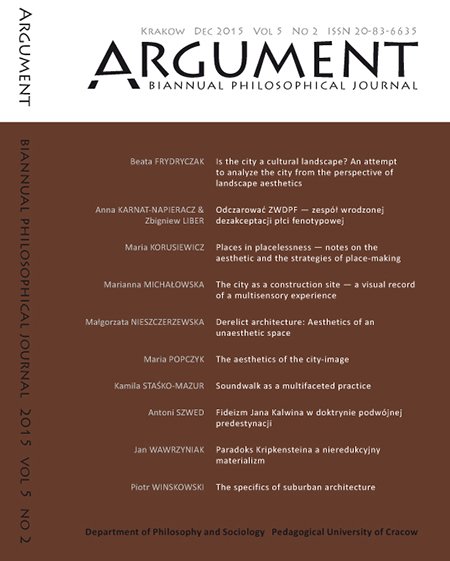Soundwalk as a multifaceted practice
Keywords:
soundwalk, sonic environment, soundscape, mediation, perceptionAbstract
The soundwalk was invented as part of the initiatives undertaken by the World Soundscape Project group with an acoustic ecology profile, which emphasised the noise pollution that exists in people’s sonic environment and the need to reacquire our ‘lost skill’ of conscious listening. Initially, the practice of soundwalking was used as a method allowing us to ‘hone our hearing’ (to boost our sonological competence), to show the human condition with respect to modern reality. Soon, the soundwalk became an inspiration for many artistic undertakings that made use of the sonic properties of the environment and employed various listening strategies. This article is designed to present the idea of soundwalking since its theory and practices began to form. By presenting selected works by Hildegard Westerkamp, I intend to show the motivations behind the practice of soundwalking, which encompass the complex issues of perceiving and assessing city sounds. I refer these to Tim Ingold’s proposition to understand sound as a medium of experience. Soundwalking, as a practice of conscious listening by focusing attention on aural sensations, paradoxically seems to reveal the multi-sensory structure of our relationship with the world, and the mediatory function of sound in our experience of being-in-the-world.


